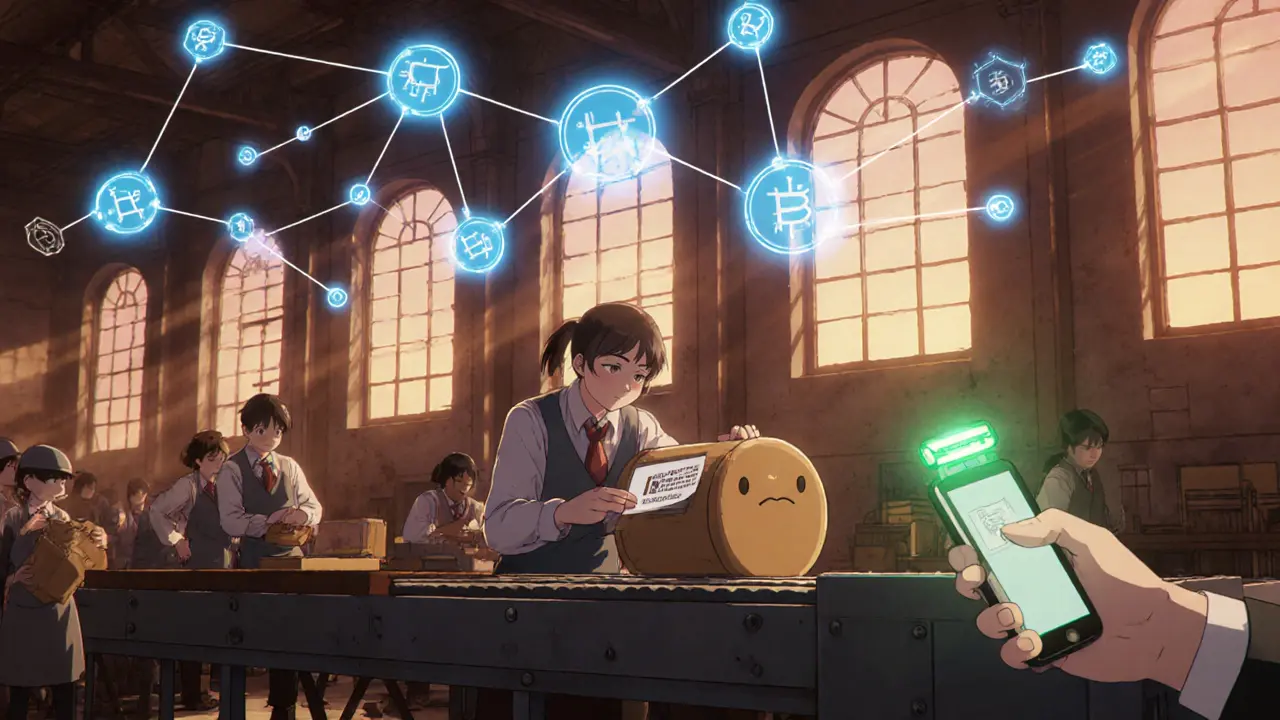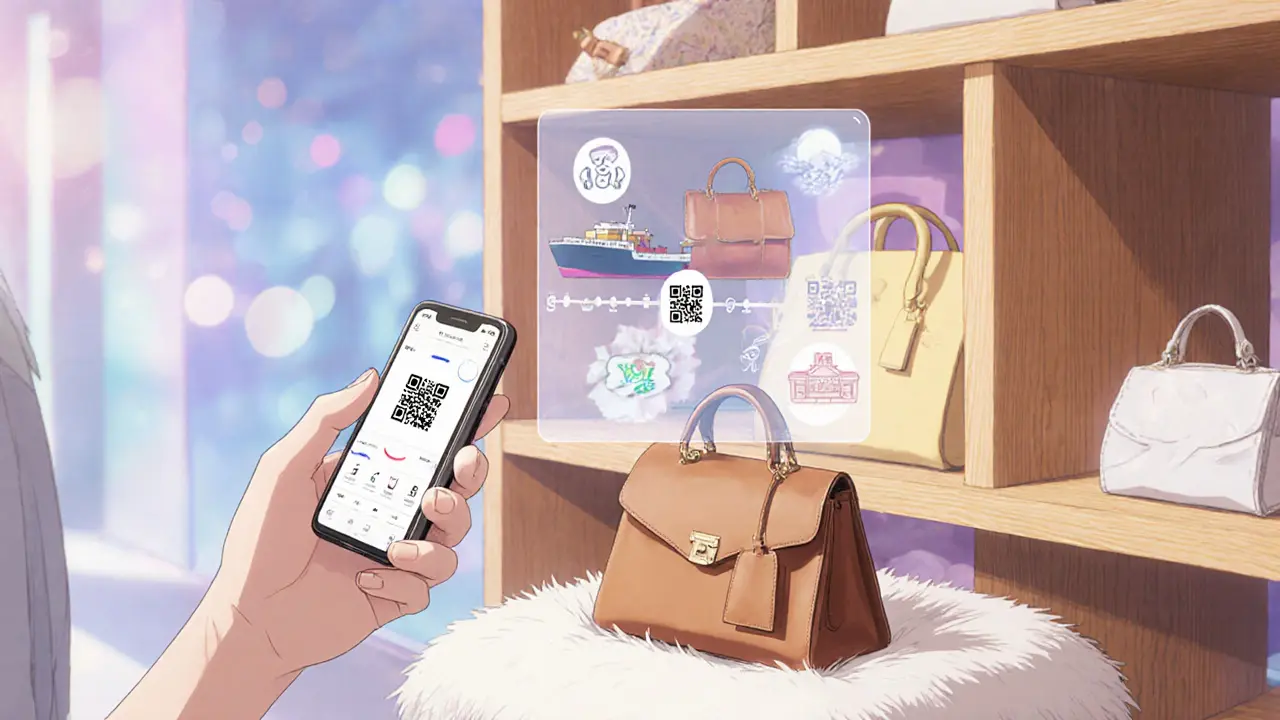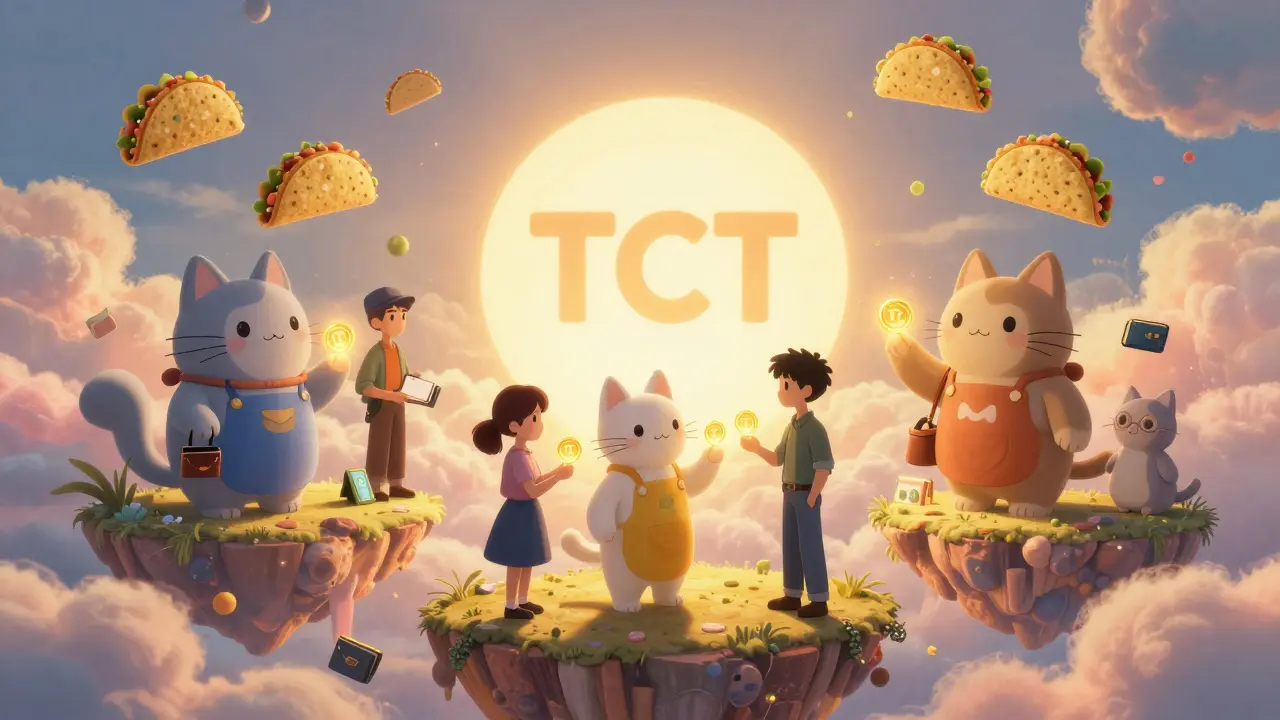Supply Chain NFT Cost Calculator
Calculate estimated transaction costs for tracking products through your supply chain using Supply Chain NFTs.
Note: Costs vary based on network congestion and real-time gas prices
Imagine buying a designer handbag and being able to scan a tiny code to instantly see where every stitch was made, who handled it, and that it’s the genuine article-not a knock‑off. That level of confidence is what Supply Chain NFTs promise.
Supply Chain NFT is a unique digital token stored on a blockchain that serves as an immutable certificate for a physical product throughout its entire journey.How Supply Chain NFTs Work
At its core, a Supply Chain NFT links a piece of physical merchandise to a digital token. When a manufacturer creates a product, a smart contract (another blockchain building block) generates a token with a distinct identifier. That identifier is then attached to the item via a QR code, NFC tag, or a traditional barcode.
Every time the product changes hands-leaving the factory, arriving at a warehouse, boarding a ship, or reaching a retailer-the responsible party scans the code. The scan triggers a transaction on the blockchain that updates the NFT’s metadata: current location, custody holder, condition, and any certifications. Because the ledger is decentralized, no single organization can rewrite history without the consensus of the network.
Two supporting technologies make the system practical:
- Blockchain provides the immutable ledger where every NFT transaction is recorded.
- IPFS (InterPlanetary File System) stores larger product documents-like certificates of authenticity or test results-off‑chain while still linking them securely to the NFT.
When a consumer finally scans the code at the point of sale, the app pulls the NFT’s full history from the blockchain and displays a transparent timeline.
Key Benefits Over Traditional Tracking
Traditional supply‑chain tools-RFID tags, barcodes, centralized databases-often suffer from data silos and limited visibility. Supply Chain NFTs address those gaps in three ways:
- Granular product‑level traceability: Each token represents a single item, not just a batch, so you can pinpoint the exact unit that encountered an issue.
- Anti‑counterfeiting power: Because the token’s identity cannot be duplicated, a fake product will lack a valid NFT, making counterfeits easy to spot.
- Stakeholder transparency: All parties-manufacturers, logistics providers, retailers, and consumers-view the same immutable record, reducing disputes.
Industries where authenticity matters most have already taken notice. In the luxury goods sector, brands use NFTs to guarantee that a handbag or watch truly originates from their ateliers. The pharmaceutical industry sees value in tracking temperature‑sensitive vaccines from the lab to the clinic, while automotive manufacturers can certify that every component meets safety standards.

Challenges and Limitations
Despite the hype, Supply Chain NFTs are not a silver bullet. Real‑world roll‑outs hit several roadblocks:
- Energy and cost: Public blockchains require miners or validators, which means transaction fees and, on some networks, high energy consumption.
- Scalability: Recording millions of individual items can strain network throughput, especially on older chains.
- Integration complexity: Existing ERP, WMS, and logistics platforms must be retrofitted to read and write blockchain data, demanding skilled developers and extensive testing.
- Stakeholder coordination: The system only works if every partner adopts the same standards and participates in the ledger.
Because of these factors, early adopters tend to focus on high‑value, low‑volume products where the ROI outweighs the upfront expense.
Real‑World Use Cases
Here are three concrete examples that illustrate how companies are experimenting with Supply Chain NFTs today:
- Fashion label “Vera Couture” attaches an NFT to each handbag. A shopper scans the tag in a boutique, sees a timeline that includes raw‑leather sourcing in Italy, a factory hand‑stitched date, and the travel route to the store.
- Medical device maker “PulseTech” registers every pacemaker on a private blockchain. Hospitals can verify that the device passed all sterilization steps and that the serial number matches the implanted unit.
- Electric‑vehicle supplier “EcoDrive” uses NFTs for battery packs. When a pack is retired for recycling, the token records the number of charge cycles and the recycling facility that processed it.
All three cases share a common pattern: the added trust lets brands charge a premium, reduces warranty fraud, and streamlines recall procedures.
Implementation Steps for Companies
If you’re considering a pilot, follow these six stages:
- Define the scope: Choose a product line where authentication adds clear value (e.g., luxury watches or high‑end electronics).
- Select a blockchain network: Public chains like Ethereum offer security but higher fees; permissioned networks (Hyperledger, Polygon PoS) reduce cost and increase speed.
- Design the NFT schema: Decide which data points to store on‑chain (ID, owner) and which to keep off‑chain via IPFS (certificates, photos).
- Develop smart contracts: Write code that mints a token at production, updates metadata at each handoff, and locks the record once the product reaches the consumer.
- Integrate with existing systems: Connect ERP/WMS APIs to trigger blockchain transactions automatically when goods are scanned.
- Run a pilot and iterate: Start with a limited batch, monitor transaction latency, cost, and user feedback, then expand.
Key skill sets you’ll need include blockchain development, data integration, and supply‑chain process mapping. Some firms partner with specialized NFT platforms to offload the technical heavy lifting.

Supply Chain NFTs vs. Other Tracking Options
| Feature | Supply Chain NFT | Batch Blockchain Token | Traditional RFID/Barcode |
|---|---|---|---|
| Granularity | Individual item | Lot or batch | Individual item (but data stored centrally) |
| Immutability | High (decentralized ledger) | High | Low (central DB can be altered) |
| Anti‑counterfeit strength | Very strong (unique token cannot be cloned) | Moderate (batch can be spoofed) | Weak (tags can be copied) |
| Scalability | Limited on public chains, improving on layer‑2s | Easier (fewer tokens) | Very high (mature tech) |
| Cost per transaction | Variable, often higher | Lower (fewer writes) | Low (hardware cost only) |
Pick the method that matches your product’s value and your organization’s technical appetite.
Future Outlook
Analysts expect the market to grow as blockchains become more energy‑efficient and standards emerge. If industry groups agree on a common NFT schema, onboarding new partners will be faster, and the cost per token will drop. Until then, enterprises should pilot in high‑margin segments, measure ROI, and keep an eye on emerging layer‑2 solutions that promise lower fees.
Frequently Asked Questions
What exactly is a Supply Chain NFT?
It is a one‑of‑a‑kind digital token that lives on a blockchain and represents a single physical product. The token stores, or links to, data about the product’s origin, custody changes, certifications, and final sale.
How does an NFT differ from a regular barcode?
A barcode is just a visual code that points to a centralized database. An NFT points to a decentralized ledger, meaning the data cannot be altered without network consensus, and each token is unique.
Do I need a crypto wallet to view a Supply Chain NFT?
Most consumer apps hide the wallet complexity. The app reads the token’s public data from the blockchain and presents it in plain language, so you don’t manage private keys yourself.
What are the biggest costs involved?
You pay transaction (gas) fees each time the NFT is updated, plus any subscription fees for the NFT platform or private blockchain service. Costs drop dramatically on low‑fee networks.
Is the technology ready for mass adoption?
Right now, most pilots focus on high‑value, low‑volume items. Widespread use will depend on solving scalability, cost, and standardization challenges.







Jazmin Duthie
October 14, 2025 AT 08:15Supply chain NFTs? Oh joy, another buzzword parade. Let’s just pretend it’s groundbreaking.
Michael Grima
October 21, 2025 AT 15:29Cool, a fancy digital sticker for your coffee beans. Fancy, flashy, and probably pricey.
Maria Rita
October 28, 2025 AT 21:42Wow, imagine the drama of tracking a single widget from factory to your front door – like a reality show for logistics! The benefits could be huge, especially for provenance and trust. But the challenges? Oh, they’re a real saga.
Jordann Vierii
November 5, 2025 AT 04:55Hey folks, think of NFTs as the new passport stamps for products. They can speed up customs, cut fraud, and make the supply chain feel like a global party.
Lesley DeBow
November 12, 2025 AT 12:09Supply‑chain NFTs? Interesting concept 🤔. Might be overhyped but worth a look.
Jeff Moric
November 19, 2025 AT 19:22I see the potential for transparency, but the real cost depends on the chosen blockchain and transaction volume. Ethereum can get expensive fast, while Polygon or Hyperledger keep fees low.
Bruce Safford
November 27, 2025 AT 02:35Alright, let’s break this down. First, NFTs on a public chain give you immutability – great for proving a product’s origin. Second, every handoff adds a transaction, and that adds up fast.
Third, gas fees on Ethereum are volatile; you might pay $5 for a tiny update today and $20 tomorrow.
Fourth, if you choose a private network like Hyperledger, you dodge most fees but lose the open‑world verification.
Fifth, the smart contract code has to be bullet‑proof – one bug and you could corrupt the whole tracking system.
Sixth, there’s the onboarding cost: developers, auditors, and training staff.
Seventh, scale matters. Ten items with ten handoffs each = 100 transactions. Multiply that by your product line and you’re looking at thousands of calls per month.
Eighth, think about data privacy – public NFTs expose every movement, which may not be desirable for competitive reasons.
Ninth, integration with existing ERP systems isn’t trivial; you’ll need middleware.
Tenth, the environmental impact of proof‑of‑work chains is still a concern for many brands.
Eleventh, the hype can drive early adopters to overspend on flashy dashboards while ignoring core logistics improvements.
Twelfth, you’ll need clear governance: who can mint, who can update, and who can revoke?
Thirteenth, legal frameworks are catching up – who’s liable if a token’s data is wrong?
Fourteenth, user experience matters; if suppliers can’t scan QR codes easily, adoption stalls.
Fifteenth, overall, NFTs can add value but only when the cost‑benefit analysis shows they solve a real pain point, not just add glitter.
Shrey Mishra
December 4, 2025 AT 09:49From a formal standpoint, the adoption of NFTs within supply chains requires rigorous compliance checks. The regulatory landscape varies across jurisdictions, and companies must ensure data integrity while adhering to privacy statutes.
Ken Lumberg
December 11, 2025 AT 17:02Honestly, this sounds like a marketing gimmick. If you can’t justify the expense, don’t bother.
Blue Delight Consultant
December 19, 2025 AT 00:15While the concept of immutable provenance is philosophically appealing, practical implementation often suffers from over‑engineering. Accuracy of input data remains the weakest link.